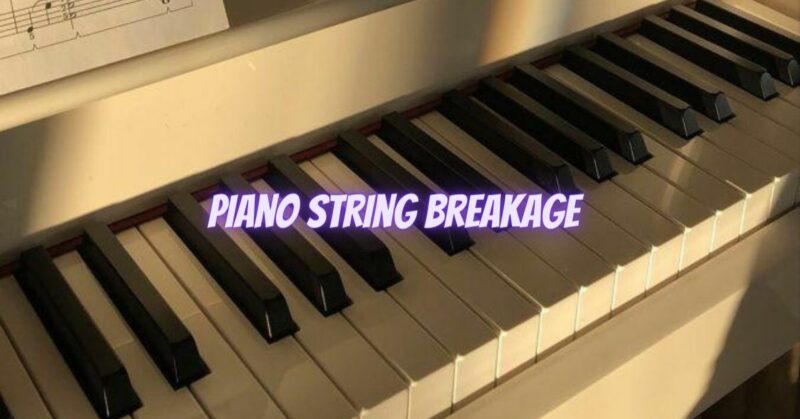Piano string breakage is a common issue that piano owners may encounter over time. Piano strings are under tremendous tension, and their constant use can lead to wear and tear, causing strings to break or snap. In this article, we will explore the causes of piano string breakage, ways to prevent it, and possible solutions when it occurs.
Causes of Piano String Breakage:
- Age and Usage: As pianos age, the strings can become weaker due to repeated tension changes from tuning and playing. Over time, the cumulative stress may lead to string breakage.
- Environmental Factors: Extreme fluctuations in humidity and temperature can cause the wooden components of the piano to expand and contract. This puts additional stress on the strings, making them more susceptible to breakage.
- Poor Maintenance: Lack of regular maintenance, such as tuning and string cleaning, can contribute to string breakage. Dirt and debris on the strings can accelerate corrosion and weaken the metal, increasing the likelihood of breakage.
- Over-Tightening: Over-tightening a piano string during tuning can put excessive stress on the string, leading to breakage.
- Defective Strings: Sometimes, the quality of the piano strings can vary, and defective strings may have weak points that are prone to breaking.
Preventing Piano String Breakage:
- Regular Tuning and Maintenance: Schedule regular piano tunings with a professional technician to ensure that the strings are at the correct tension and avoid sudden fluctuations that can cause breakage. Regular maintenance also includes cleaning the strings and soundboard to prevent debris buildup.
- Controlled Environment: Maintain a stable environment for your piano by controlling humidity and temperature levels. Use a humidifier or dehumidifier, if necessary, to keep the humidity within the recommended range.
- Gentle Tuning: When tuning the piano, make sure to apply gradual and gentle pressure to avoid over-tightening the strings.
- Quality Strings: When replacing broken strings or restringing the piano, invest in high-quality piano strings from reputable manufacturers to ensure their durability and longevity.
- Professional Inspection: Have your piano inspected by a qualified piano technician regularly. They can identify potential issues early on and make necessary adjustments to prevent string breakage.
Solutions for Piano String Breakage: If a piano string breaks, here are the steps to address the issue:
- Identify the Broken String: Locate the broken string by visually inspecting the piano and matching the sound to the corresponding key.
- Carefully Remove the Broken String: Use wire cutters to cut the broken string near its termination points, ensuring that no loose ends remain that could damage the piano’s internal components.
- Replace the Broken String: Measure the length and gauge of the broken string and obtain a suitable replacement from a piano parts supplier. Insert the new string through the agraffe and secure it to the tuning pin.
- Tune the Piano: After replacing the string, tune the piano to the correct pitch using a piano tuning lever.
- Inspect and Monitor: Check the surrounding strings for any signs of wear or damage and consider having the piano inspected by a professional technician to ensure there are no underlying issues.
By understanding the causes of piano string breakage and taking preventive measures, piano owners can prolong the life of their instrument and maintain its beautiful sound for years to come. Regular maintenance and prompt attention to string breakage will ensure that your piano continues to be a source of joy and inspiration.


